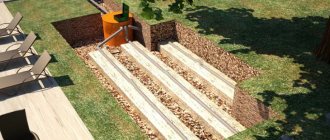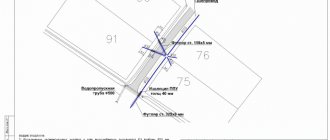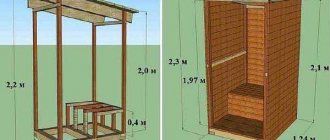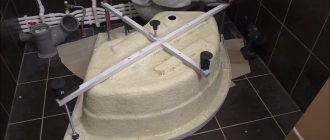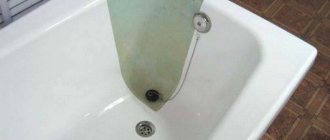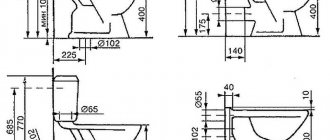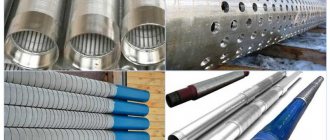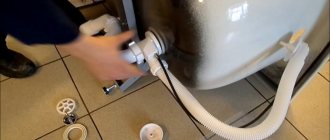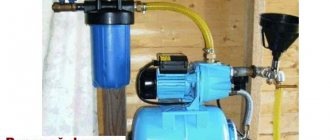Does your pool, in addition to the joy of bathing and swimming, cause you trouble in the form of quickly polluted water? Did the cost of filters for cleaning it, which are offered in specialized stores, shock you? Agree, it would be nice to get a filter device for a reasonable price.
You don't have to buy expensive devices for this. You can make an effective sand filter for your pool with your own hands, which will adequately purify the water from foreign matter. We will help you cope with this task - the article provides step-by-step instructions on how to make such a filter on your own.
We provided the construction process with visual photographs and videos on how to independently create simple and effective filter devices.
Pros and cons of a pool pump with sand filter
The main advantage of the sand filter is its simplicity of design. It consists of a tank with pipes and a pressure gauge. The filtration function is performed by quartz sand. The filler is cheap and available to the average consumer. If desired, you can extract it from a quarry and prepare it yourself for filling into the filter.
Sand filler perfectly retains organic and mineral water pollutants. Chemical reaction products formed during the disinfection of the font remain in it. However, sand filler only retains particles as small as 20 microns, and this is the main disadvantage.
Ease of maintenance is considered a plus. As the sand material becomes contaminated, cleaning is performed by backwashing. Quartz sand will last about 3 years. The service life depends on the degree of water contamination, the frequency of visiting the pool and a number of other indicators related to the intensity of use of the filter.
Advice! You can increase the service life of the filter by adding glass sand filler instead of quartz sand.
Another advantage is that you can assemble a sand filter from parts available at home. If there is nothing suitable, it is easier to buy a filter unit. Its cost is affordable.
Among the disadvantages, pool owners note the large weight and size of the filter unit. He occupies a free space near the font. If necessary, a sand tank is difficult to transport.
Why use filtration equipment?
In any body of water, the water becomes contaminated with organic matter over time. This process is greatly accelerated in summer in tanks that are not serviced with filtration and circulation equipment. To this should be added the possibility of the pool becoming clogged with large debris - leaves, grains of sand, branches, etc. Since there is no natural circulation in it, owners try to achieve effective water purification by selecting special equipment.
It promptly removes contaminants, preventing the decomposition of organic matter and the growth of pathogenic microflora in the pool. Therefore, it will not be possible to detect unwanted inhabitants in the water column, including cyanobacteria, algae, mosquito larvae, etc.
If measures are not taken, these microorganisms will multiply or decompose, thereby spoiling the microflora of the water and the overall aesthetics of the pool. The situation can be corrected. It is enough to make a pool filter with your own hands and make sure that it works properly and efficiently.
How does a sand filter for a pool work?
The sand filter unit consists of five main units:
- a tank with a neck and a tight-fitting lid;
- water supply pipe;
- water outlet pipe;
- sand filler;
- drain chamber cylinder.
The tank is made of corrosion-resistant material. The most commonly used material is plastic. The cylinder of the drainage chamber is made of stainless mesh. The water outlet pipe is connected here. The mesh cells of the cylinder are smaller in size from sand particles. The filler is quartz or glass sand with a fraction size of 0.4-0.8 mm.
In general terms, the construction of a sand filter for a pool is so simple that it is often assembled from small plastic barrels. There is a lid with a neck for filling the filter material. You just need to solder the pipes and make a drainage chamber with your own hands from the mesh.
Video with a visual example of production
- Author: Regina
Rate this article:
- 5
- 4
- 3
- 2
- 1
(12 votes, average: 3.3 out of 5)
Share with your friends!
How to choose the right pool filter: a comparative review of 3 filter devices
Which filter and pump to choose for the pool
How does a pool sand filter work?
The body is not completely filled with sand. There is space between the filler and the neck of the tank. Dirty water from the pool, pumped by a pump, enters here through the supply pipe. The liquid passes from top to bottom through the sand filler. Clean water enters the drainage compartment through the mesh and enters the pool through the outlet pipe. The cycle repeats continuously as long as the pump is running.
During operation, pressure or vacuum is created inside the container by the pump. You can determine it using a pressure gauge. The indicator depends on the installation location of the pump:
- If the pump is located in front of the filter on the supply pipe, a slight pressure is created inside the tank. The action is due to the fact that water is pumped into the container.
- When the pump is installed on the outlet pipe after the filter, water is sucked out of the tank. A vacuum forms inside the container.
During filtration, gradual contamination of the sand filler occurs. For flushing, the taps are switched, and the pump begins to supply water in the opposite direction - from bottom to top. Clean liquid flows inside the tank. The dirty water coming out from above is discharged into the sewer.
The video provides an overview of the operating modes of the sand filter unit:
Six position valve
The 6-position valve is one of the most important parts on any filtration installation. In essence, this is a control panel for the installation, because it is on the 6-position valve that the sand filter operating modes are switched.
This valve gets its name due to the number of modes into which it switches the installation:
- FILTER – filtering mode, normal operating mode of the installation;
- BACKWASH is a flushing function in which water from a reservoir is supplied to the housing and passes through a filter in a reverse flow, and then flows into the sewer. Thus, the filter is washed.
- RINSE – compaction of the filter material, should be carried out immediately after washing;
- WASTE – emptying mode, in which water immediately goes into the sewer without passing through the filter;
- RECIRCELATE - simple distillation of water through the installation, while the water does not pass through the filter;
- CLOSED – the valve is closed, any fluid movement stops;
- WINTER – preservation of the installation for the winter.
Sand filter diagram for a pool
If you decide to create a sand filter installation with your own hands, you will need a drawing of it. You can take one of two schemes as a basis:
Design features and varieties
The basis of the sand filter is a sealed housing. In the classic layout of a sand filter, the housing has two outlets - at the top and at the bottom. Hoses for supplying contaminated water and discharging purified water are connected to these holes. The body does not have to be collapsible; it is enough to have a lid at the top for storing quartz sand. This design option corresponds to the classic layout - when water is supplied under low pressure, and the filter element itself cleans from mechanical impurities.
Today, for home pools with a volume of up to 25 m3, filters and filtration stations are used that have a slightly different design.
The first difference from the classic sand filter design of a water purification installation is the presence of a pump in the design. The pump included in the installation allows for high performance of the device by creating additional pressure in the system.
The modular layout, when both the pump and the filter have individual housings and are placed on the same platform, is considered the simplest and most effective.
At the same time, manufacturers also offer an integrated installation scheme - when the filter and pump are installed in one housing. The third no less popular scheme is a filter in a separate housing, to which you can connect any pump, even a regular centrifugal garden pump.
In addition to the layout, modern filtration systems have other design features:
- multi-position valve;
- pressure gauge;
- dispenser for adding chemicals to water;
- on timer;
The design of the filter element housing has an additional filter, which ensures sand retention in the main filter. The second filter is usually installed in front of the pump; it protects the pump from large debris particles entering its cavity.
The housing of the sand filter and pump is made of high-quality plastic, which provides reliable protection of the electric motor from moisture penetration. The filter housing itself is capable of withstanding pressure up to 4.0 bar.
The connection between the filter, pump and pool bowl is made using special hoses or tubes. Here the design provides not only for the usual connection using standard adapters and fittings, but also for the installation of taps and valves for washing sand and discharging contaminated water into the sewer.
How to choose a sand filter for your pool
The filter is usually sold without sand filler. The consumer buys sand separately. When choosing a model, first of all, select a product of the required volume. The indicator determines the power of the filter. This determines how well the installation will handle water filtration. The larger the pool and the more often it will be used, the larger the filter unit needed. Here it is better to consult with specialists when purchasing a product.
It is important to consider the method of fastening the filter, as well as the location of the font. Sand filter units cannot be attached to the pool due to their heavy weight. The tank is installed next to the font. For aesthetic reasons and saving space, it is best to buy a filter for an outdoor pool.
The last rule is to choose a suitable sand filler. It is sold in bags, fully prepared for use. Quartz sand is cheap, but it has a short filtration resource. The glass mixture lasts twice as long. A combined filler with gravel particles and other additives is considered excellent.
Required materials and tools
All you may need when making a filter device yourself is:
- soldering iron, suitable for polymers;
- hacksaw;
- strong scissors;
- drill;
- pliers;
- sealant.
But first you need to acquire the following list of items:
- suitable container with a wide neck;
- well-closing lid;
- pipe sections, clamps, hoses;
- sand base as filler;
- water intake device;
- drainage pipe;
- pumping system, valve.
How to make a sand filter for a pool with your own hands
To assemble a sand filter installation, you must responsibly approach the implementation of each step of the step-by-step instructions.
Which sand is best for a pool filter?
It is better to buy sand filler in a store. It consists entirely of screened granules measuring 0.4-0.8 mm. The material has been washed, disinfected, and is ready to be loaded into the filter immediately. The choice between quartz, glass or a combination filler depends on personal preference. They will filter almost the same, only the service life differs.
It is better not to use quarry or river sand in a homemade sand filter for a pool. Firstly, it is difficult to filter out fractions of only the required size. Secondly, a long procedure of washing to remove impurities will be required.
How to replace quartz sand in a pool filter
If prepared quartz sand is not available for sale or for some reason it does not suit the pool owner, it can be replaced with glass or a combined filler. In the absence of any prepared material on sale, you will have to use self-extracted material from the quarry.
The sand is dried and sifted through a sieve. The condition is required. If small fractions remain, they will clump. Large grains of sand will not provide filtration. The prepared filler is loaded into the filter, switched to the backwash mode, and wait until the turbid flow from the pipe is replaced by clean water.
How much sand to put in a pool filter
The amount of sand backfill depends on the volume of the tank. However, they do not fill it to the top, but leave space. Sand filler is sold in bags weighing 25 kg. For a pool with a volume of 15-40 m3 you need about two bags. Sand is poured inside the tank and moistened with water to compact it. The fill level on most factory-made filters is usually marked with a mark.
How to assemble a sand filter for a pool
To assemble the filter yourself, you will need a plastic barrel with a threaded neck and a lid. The size depends on the volume of the pool. The pipes are made of plastic pipe, and for the drainage chamber you need a bowl and nylon stockings.
Assembly order:
- Holes are cut under the inlet and outlet pipes. Two pieces of the required length are cut from the plastic pipe. The pipes are soldered with a soldering iron. For reliability, the joints are treated with sealant.
- The drainage chamber is made from a plastic bowl. The bottom and sides are perforated with a drill. The bowl is covered with two or three layers of nylon tights. The mesh should be fine so that sand does not pass through.
- A mesh is placed at the end of the inlet pipe inside the barrel. It will divide a powerful stream of water into several small jets that will fall on the sand backfill.
- The prepared sand mass is poured inside the barrel, and the hoses are attached to the pipe using hot-melt adhesive. The system is connected to the pump.
- Fill the barrel with water with your own hands so that the sand settles. Sludge is removed from the bottom of the pool, which can quickly clog the filter.
- Install a pressure gauge on the lid of the barrel and close it. After starting the pump, look at the pressure. If it constantly grows and exceeds the initial value by 30%, then the sand filler requires washing.
- The pump is stopped. The inlet and outlet hoses are swapped with your own hands. The pump is turned on and the dirty water is discharged into the sewer.
After washing, the hoses are returned to their original condition. Try to start the filtration system in normal mode.
Maintenance and care
In order for the treatment system to work effectively, it is important to pay attention to the following points:
Install the device correctly. It should ensure water circulation. If there are “blind” areas where water does not flow into the intake pipe, pollutants and bacteria will accumulate there.- Water should be taken from the upper layers of the pool - this is where a large amount of pollutants collects. The drain can be installed at any depth of the bowl.
- Access to the filtration system should not be blocked for the convenience of changing sand filtrate.
- Sand is replaced when the filter fails and the pressure drops to below a threshold value (0.8 kg/cubic meter).
- If the system no longer copes with water purification, you need to replace the filtrate or the entire treatment plant.
All the most important and useful information about sand filters for pools is in this section.
How to connect a sand filter to a pool
All equipment connections are made with a flexible hose. The filter is installed near the pump behind the pool wall. As discussed above, there are two connection schemes:
- in front of the pump;
- after the pump.
For all factory-made filter systems, the pump is usually located in front of the tank, where it creates pressure inside. When assembling with your own hands, the location of the filter is determined individually. If the sand filter is connected to the pool after the tank, then the system is configured so that water from the bowl is drawn in by vacuum or flows by gravity.
The main problems during the operation of a filter unit and their solutions
The following problems often occur with a sand filter:
- The pump does not suck in water well - perhaps air has gotten into the tube, or it has lost its seal;
- The pump circuit breaker keeps tripping - if the problem persists, call a professional. The motor fan may not be working properly and should be cleaned;
- Low power - most likely the filter is clogged. This can be indicated by the pressure gauge needle. In this case, you should clean the filter by turning on the “rinsing” mode;
- The pump is very loud - most likely foreign objects have gotten inside. The pump should be disassembled and cleaned. If the bearings rattle, the motor should be replaced completely. If the pump is on the floor, then rubber pads should be placed that will dampen the vibrations of the pump;
- The device does not work - you need to check the voltage in the network, as well as the fuses in the device. If nothing suspicious is found, and the pump still does not work, you should call a specialist;
- Sand enters the pool from the filtration unit - the sand should be replaced with a larger fraction;
- The water in the pool is cloudy and poorly purified - most likely, the installation’s power is not enough to clean the pool; you can also try increasing the filtration time.
Timely care and proper operation of the equipment guarantee a long service life of the pump, and, therefore, maximum pleasure from using the pool.
You may also like
Instructions for use of a sand filter for a swimming pool
The sand filter element is easy to use. The factory design has a switch that allows you to quickly flush or switch to another operating mode.
How to use a pool sand filter
During operation of the filter, the following basic rules must be observed:
- when switching to a new mode, be sure to stop the pump;
- the sand filter element is removed from the walls of the pools at a distance of 1 m;
- In order for the pump to operate smoothly, free access of air is provided to it;
- regulate operating modes in the same way when the pump is turned off.
The valve shift handle has a lock. It should work when switching to another mode. The pump cannot be put into operation if the lock is not in the special recess.
How to clean a pool sand filter
To flush the pool filter, you need to turn the switch handle to the appropriate mode. The procedure is performed with the pump not running. To discharge dirty water from washing, open the tap of the branch leading to the sewer. After starting the pump, flushing usually lasts 3-4 minutes. The guideline is the appearance of a clean flow of water.
Important! Some factory-made pool filters are equipped with transparent chambers. Through the walls you can observe the state of the water.
After washing, the working filter should show normal pressure. The indicator depends on the depth of the pool, water volume, level difference and other nuances. Typically, pressure in the range of 0.5-1 atmosphere is considered normal. If the pressure gauge needle has risen to 1.5 units, you still need to rinse the sand filler.
When to change the sand in your pool filter
Often the sand filler is not changed. Each material has a service life. If the pool was filtered with quartz sand, then it must be changed after three years. Glass sand filler wears out within 5-6 years. It all depends on the degree of clogging of the pool and the frequency of its use.
Premature replacement is required when the sand is heavily contaminated and backwashing does not help. If after turning on the pump the pressure continues to increase, this indicates complete wear of the filter element.
How to change sand in a pool filter
To change the filter material, you first need to purchase new sand. Stop the pump and open the tank loading cap. The old filler is scooped out by hand or pulled out with a construction vacuum cleaner. For private pools, the first method is the most suitable.
In general terms, the step-by-step instructions for replacing sand in a pool filter are the same. However, there are nuances. There are high and low filter units. In the first version, the loading neck with a lid is located on top of the tank. There may be a valve on it, which must first be removed. It is more convenient to work if the valve is installed on the side wall of the tank, but you will have to wait longer for the water to drain.
The second option is a low filter. It is often used on private small swimming pools. There is no large loading opening. Replacing sand with your own hands occurs through a small hole. Here it is optimal to come up with convenient devices: spatulas, scrapers.
Important! If the sand inside the tank becomes coked, the filter will have to be disconnected from the system and a new one installed. It is impossible to remove filler that has hardened from excess calcium from the container.
After removing the sand, check the pipes and drainage chamber with your own hands for defects. The tank is filled halfway with water to soften the impact of the filler on the bottom of the tank. A funnel is installed on the loading neck. Dry sand is poured from a bag. As the filling progresses, the layers are compacted by supplying water. When the desired level is reached, backfilling is stopped. The neck is closed with a lid. The switch handle is set to backwash mode. After completing the procedure, the switch handle is set to compaction mode. After doing the preparatory work with your own hands, they switch to working mode.
Advantages of sand filtration device
Three types of filters are used to purify pool water:
- diatoms;
- cartridge;
- sand.
Diatomaceous . The best quality of cleaning and reliability of operation is ensured by the diatomaceous earth (also called diatomite) type of filter device. However, such a unit is expensive due to the use of an expensive product that performs ultra-fine filtration and adsorption, in addition to eliminating a number of bacteria.
The filter elements of the cartridge variety are the devices on which the name of this group of filters is based. This is the most convenient, but not very popular type of water purification device due to the price. True, they are more affordable than the previous ones.
Cartridge packages made from natural raw materials (fossil skeletal mass) provide high quality cleaning and neutralize most microbes, but have a high price
Cartridge devices have a simple design and can be easily disassembled for cleaning and replacing the main element. The cleaning component is a cylindrical cartridge consisting of polypropylene membranes.
Such filters have low performance, so they are suitable only for small pools. The cartridges themselves have to be washed frequently (once a day) and replaced.
Cartridge-type filters are quite compact. They are installed by the pool or directly in the tank. However, due to low productivity, they are used for small-volume pools
Sand filters can effectively serve fairly large tanks. The filter layer is quartz sand. The units have a simple design and can be assembled on your own. At the same time, the cost of the finished cleaning system will be approximately 2 times lower than the purchased one.
In addition to mechanical methods for purifying pool water, chemical agents are also used to help precipitate contaminants, after which they are simply collected with a net or similar device.


